The ARRL September VHF Contest fromMaxwell Butte
September 14-15, 2001,W7ZOI and KA7EXM.
Posted 16Sept02, Updated 18Feb03 (pdf converted to html on 28Dec09)
Maxwell Butte is a small peak in the south west corner of Oregon's Mt. Jefferson
Wilderness area. It is reached by a fairly easy trail from highway #22 from
the west, or cross country from the interior of the Wilderness. Although
we had visited the peak a couple of times from cross country routes, we had
never taken the more common trail route that we picked for the VHF contest
this fall. An abbreviated map of the area is shown.
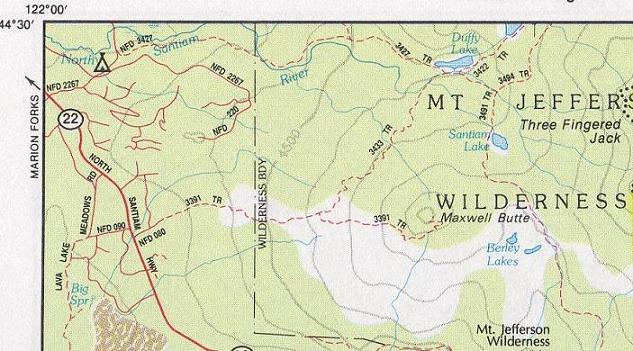
The elevation of Maxwell Butte is 6229 ft with no peaks of comparable or
higher elevation in the immediate area. Three Fingered Jack is considerably
higher, but is 3 miles to the NE. Note the co-ordinates at the map upper-left
corner. This places Maxwell Butte in Grid Square CN94.
We drove to the trailhead on Saturday morning and spent the better part of
the afternoon doing the hike to the top. Although the distance is only 5
miles, there is 2500 ft of elevation gain, so it took some time. We had moderate
packs, for we carried all the water we would need for an overnight camp plus
equipment for the stormy weather that had been predicted. We lucked out and
the weather remained calm for the entire trip. Near the end of the
climb the views begin to unfold to the south with great shots of Mt. Washington
and the Sisters. However, it is not until we finally reached the summit that
Mt. Jefferson and ' Jack could be seen. We made and consumed a quart of lemonade
upon reaching the top, and then proceeded to get on the air and to get our
tent pitched.
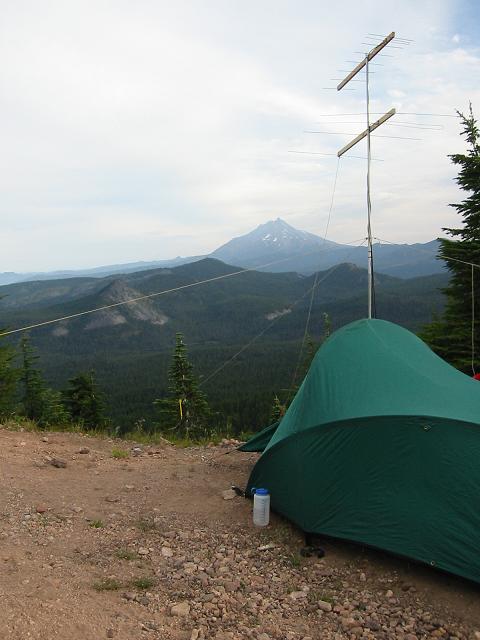
The view above shows Mt. Jefferson 15 miles to the north. The east and north
faces are heavily glaciated, but the south face is nearly bare of snow this
late in the year. Although lost in haze at this time, Mt Hood was clearly
evident the next day. A tether line extending to a rock is attached to the
front of the 144 MHz Yagi antenna to prevent the antennas from rotation in
the breeze. Not shown is another antenna, a dipole for 50 MHz strung between
the trees.
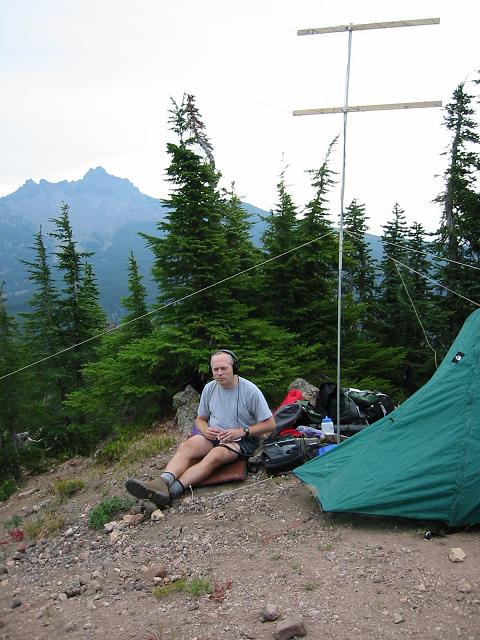
This view shows Roger operating the station. The antenna is now pointed south-west
toward CN73 on the coast. That's Three Fingered Jack in the background.
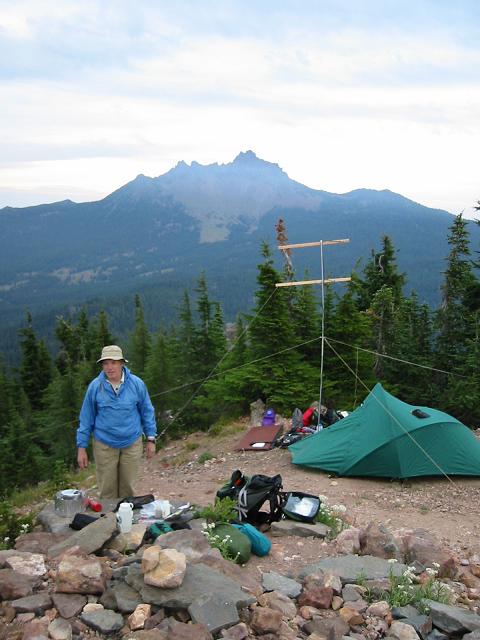
Here we have Wes cooking a dinner of freeze dried pasta primavera.
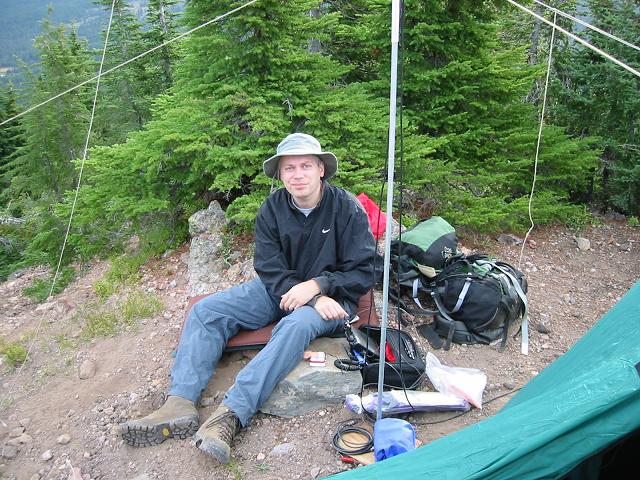
This photo shows Roger operating on Sunday morning.
Results were outstanding with numerous contacts with old friends and new
acquaintances. The best DX was on the 144 MHz band, with both CW and SSB
contacts to CN88 (Canada) and CN98 (US side of the border.) We used
Roger's FT817 transceiver, powered by an 8 amp-hour 12 volt Gel-Cell sealed
Lead-Acid battery. We got several hours operation from this combination,
typically developing an output of 2.5 watts, but kicked up to 5 watts when
needed. An especially interesting contacts was with Tom, KD7LXL, who was
also running low power from his CN87 home. Tom used an FT817 with a 9 element
M^2 Yagi on 144.2 MHz. (Tom is KA7EXM's nephew and W7ZOI's grandson.) Some
of the established friends who contributed contacts on several bands included
W7PUA, K7AYP, WA7MLH, WB7RSG, and WA7TZY. Although 144 MHz was
the dominant band, results were also good on 432 and 50 MHz. The Six
meter band, with just a dipole, was surprisingly interesting. It's always
fun for the two of us who have only modest (at best!) home station antenna
systems to operate in really good locations. A dipole on a high peak can
be much more interesting than a Yagi on the flats! The total
was 63 QSOs with a multiplier of 24. KA7EXM did all of the operating while
W7ZOI served as a cook and pack animal, with only casual comments on the
air. We would have shared in the operating, but the ARRL rules only allow
one operator in the QRP category. ARRL has Field Day categories that allow
for two operators with one station, but do not allow it on VHF. Go figure.......
The equipment available for portable operation is now of reasonable
quality and moderately priced. It is surprising that more folks are
not willing to take their stations into the field. There were at least
a dozen additional peaks that could have been reached on foot that we could
see fromMaxwell Butte. They were sitting there, waiting for operators.
We had a ball and the fun is just waiting for others to join in.
Update: Feb 18, 2003. The March 2003 QST just arrived and I noted that this
effort got us into the Top Ten. Truly amazing. We were really quite causal
with
the effort. Our high position in the standings suggests that there is not
much competition in the Single Operator Portable category.